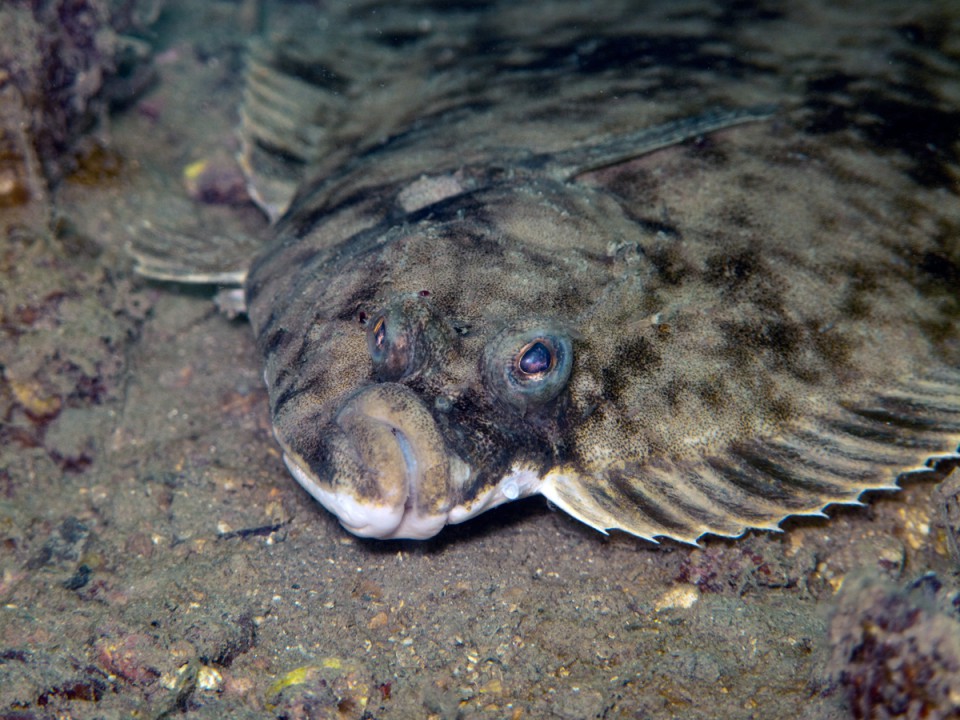Platichthys flesus flesus
È un pesce con il corpo compresso, piatto che può crescere fino a 50 cm anche se comunemente arriva a 20-25 cm. Entrambi gli occhi sono sul lato destro del corpo e dietro agli occhi o all’inizio della linea laterale ci sono uno o due tubercoli ossei, oltre che una fila di piccoli ed appuntiti tubercoli lungo la base della pinna dorsale e di quella anale. La colorazione è scura, bruno–nero-verdastra sul lato oculare mentre sul lato opposto, quello cieco, biancastra, a volte con macchie brune. Specie carnivora che si nutre di piccoli invertebrati bentonici, vive su fondali fangosi e sabbiosi a bassa profondità ed è tipica del Mare Adriatico. Durante l’estate staziona spesso nelle acque lagunari e salmastre. Si riproduce in mare durante l’inverno (la femmina è in grado di produrre più di un milione di uova) e nel Golfo di Trieste compare tra dicembre e febbraio. La pesca viene effettuata con particolari reti trimagliate da posta dette “passelere”. Trattandosi di specie che vivono a stretto contatto con il fondo possono essere catturate anche con reti a strascico. Le passere migliori si pescano in estate nelle lagune e nei bassi fondali, mentre nelle pescherie triestine sono tipiche le “passere coi ovi” e i “latesioi”, i maschi maturi, che compaiono sui banchi di vendita puntualmente a fine novembre. Un tempo in tassonomia si usava distinguere due sottospecie: Platichthys flesus flesus (italicus), considerata endemica dell’Alto Adriatico, e Platichthys flesus luscus.

